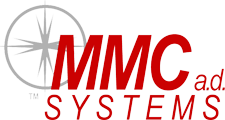Strategic Plan Part 2 – Environmental Analysis

Environmental analysis involves understanding and assessing where an organization is today and what may impede its future progress. The analysis starts with understanding the organization’s market and customer, assessing its resources and dependancies, and concludes with a SWOT analysis.
Market & Customer
Identify each market that an organization is competing in or planning to compete in. Then identify each market’s customers and their needs and sales/service challenges. Each market’s customers may not be the same. Understanding the differences and the potential impact of selling and servicing them may be important in terms of time and required resource. This analysis should be short and mostly involve the compilation of existing knowledge. The entire management team should be aligned and focussed on these markets and customers.
Each department within an organization should identify who their department’s customers are and prioritize their importance to the overall organization’s strategy and goals. Most of a department’s customers will be internal to the organization.
Resources & Dependancies
An organization needs to identify what resources are available, both within and without the organization. The required resources will acquire and serve customers and may involve the creation and assembly of products and services sold. These resources include staff, staff with key capabilities, technology and well-defined processes.
SWOT Analysis
A SWOT analysis involves identifying your organization’s strengths, weaknesses, opportunities and threats. It is a process of evaluating the internal and external factors that affect your organization and can help you make better decisions about your organization’s strategies.
Strengths are advantages that you have versus your competitors. These can include things like strong brand reputation, loyal customer basis, talented employees and efficient processes.
Weaknesses are internal factors that put your organization at a disadvantage when compared to your competitors. These can include things like outdated technology, lack of financial resources, low employee morale, missing staff skills and inefficient key processes.
Opportunities are factors that you can leverage to your organization’s advantage. These include things like taking advantage of changing markets, new customer segments, emerging technologies and new or updated products and services.
Threats are factors that can adversely affect your organization. These can include things like new competitors, changing regulations, market maturity or saturation and general economic downturns.
The goal from a SWOT analysis is to help an organization’s leadership make better well informed decisions that make the organization more competitive and successful.
Alternate Analysis Techniques
SOAR and SVOR are alternative organizational analysis methods. SOAR analysis is a newer tool that emphasizes an organization’s strengths and opportunities and is designed to promote positive change. The analysis encourages organizations to focus on what they do well and what they want to achieve (A = aspirations and R = Results). SVOR analysis is similar to SOAR but emphasizes the importance of identifying and measuring results. It stands for Situation, Vision, Objectives, and Results, and is a more structured approach to strategic planning that emphasizes concrete outcomes.
Whichever tool is used, it is important that the analysis is conducted with an open and honest assessment of the organization’s strengths and weaknesses.
Share this: